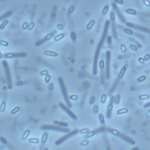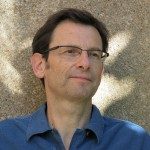Link to Pubmed [PMID] – 32631945
Link to DOI – e00282-2010.1128/JB.00282-20
J Bacteriol 2020 Aug; 202(18):
Clostridioides difficile is an etiological agent for antibiotic-associated diarrheal disease. C. difficile produces a phenolic compound, para-cresol, which selectively targets gammaproteobacteria in the gut, facilitating dysbiosis. C. difficile decarboxylates para-hydroxyphenylacetate (p-HPA) to produce p-cresol by the action of the HpdBCA decarboxylase encoded by the hpdBCA operon. Here, we investigate regulation of the hpdBCA operon and directly compare three independent reporter systems; SNAP-tag, glucuronidase gusA, and alkaline phosphatase phoZ reporters to detect basal and inducible expression. We show that expression of hpdBCA is upregulated in response to elevated p-HPA. In silico analysis identified three putative promoters upstream of hpdBCA operon-P1, P2, and Pσ54; only the P1 promoter was responsible for both basal and p-HPA-inducible expression of hpdBCA We demonstrated that turnover of tyrosine, a precursor for p-HPA, is insufficient to induce expression of the hpdBCA operon above basal levels because it is inefficiently converted to p-HPA in minimal media. We show that induction of the hpdBCA operon in response to p-HPA occurs in a dose-dependent manner. We also identified an inverted palindromic repeat (AAAAAG-N13-CTTTTT) upstream of the hpdBCA start codon (ATG) that is essential for inducing transcription of the hpdBCA operon in response to p-HPA, which drives the production of p-cresol. This provides insights into the regulatory control of p-cresol production, which affords a competitive advantage for C. difficile over other intestinal bacteria, promoting dysbiosis.IMPORTANCEClostridioides difficile infection results from antibiotic-associated dysbiosis. para-Cresol, a phenolic compound produced by C. difficile, selectively targets gammaproteobacteria in the gut, facilitating dysbiosis. Here, we demonstrate that expression of the hpdBCA operon, encoding the HpdBCA decarboxylase which converts p-HPA to p-cresol, is upregulated in response to elevated exogenous p-HPA, with induction occurring between >0.1 and ≤0.25 mg/ml. We determined a single promoter and an inverted palindromic repeat responsible for basal and p-HPA-inducible hpdBCA expression. We identified turnover of tyrosine, a p-HPA precursor, does not induce hpdBCA expression above basal level, indicating that exogenous p-HPA was required for p-cresol production. Identifying regulatory controls of p-cresol production will provide novel therapeutic targets to prevent p-cresol production, reducing C. difficile’s competitive advantage.

